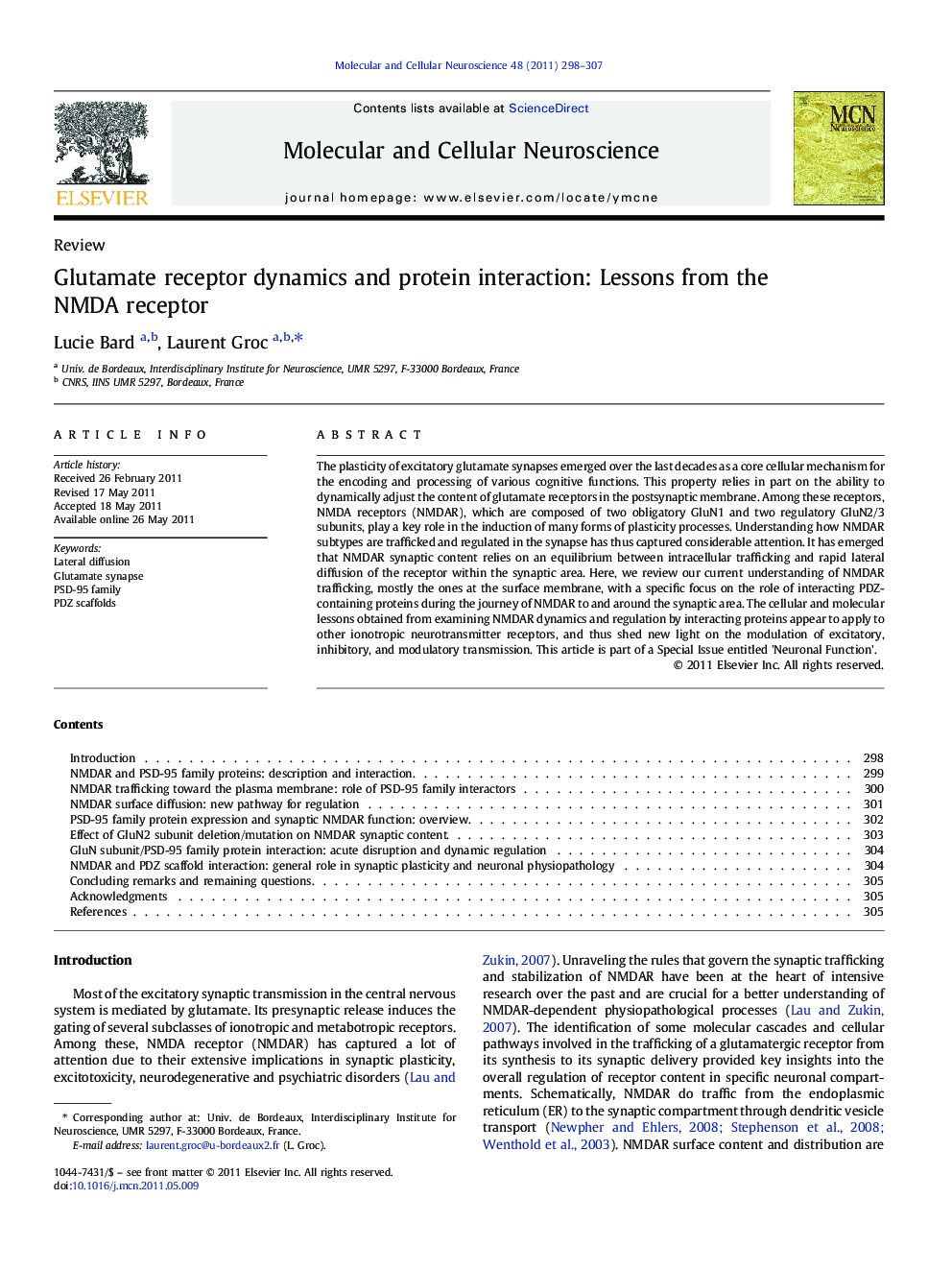| Article ID | Journal | Published Year | Pages | File Type |
|---|---|---|---|---|
| 2198686 | Molecular and Cellular Neuroscience | 2011 | 10 Pages |
The plasticity of excitatory glutamate synapses emerged over the last decades as a core cellular mechanism for the encoding and processing of various cognitive functions. This property relies in part on the ability to dynamically adjust the content of glutamate receptors in the postsynaptic membrane. Among these receptors, NMDA receptors (NMDAR), which are composed of two obligatory GluN1 and two regulatory GluN2/3 subunits, play a key role in the induction of many forms of plasticity processes. Understanding how NMDAR subtypes are trafficked and regulated in the synapse has thus captured considerable attention. It has emerged that NMDAR synaptic content relies on an equilibrium between intracellular trafficking and rapid lateral diffusion of the receptor within the synaptic area. Here, we review our current understanding of NMDAR trafficking, mostly the ones at the surface membrane, with a specific focus on the role of interacting PDZ-containing proteins during the journey of NMDAR to and around the synaptic area. The cellular and molecular lessons obtained from examining NMDAR dynamics and regulation by interacting proteins appear to apply to other ionotropic neurotransmitter receptors, and thus shed new light on the modulation of excitatory, inhibitory, and modulatory transmission. This article is part of a Special Issue entitled 'Neuronal Function'.
